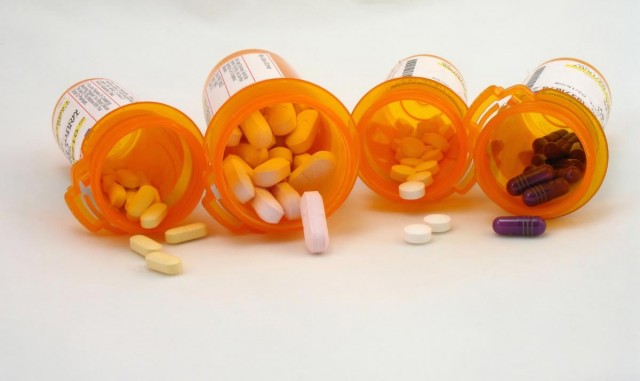U.S. study reveals massive expansion in the amount of antibiotics prescribed… and the outcome for humanity could be grim
05/11/2016 / By JD Heyes

Antibiotic-resistant superbugs have been developing now for some years now, thanks in large part to the over-prescribing of the drugs for inappropriate illnesses. And for many of those years there have been experts warning that such overuse will ultimately have dire consequences for the human race.
Unfortunately, too few doctors and other primary care providers – as well as patients who insist they must be given “something” for their cold or flu – have listened and heeded the warnings.
As reported by CBS News, bacteria that is resistant to many antibiotics is only growing, and now is leading to thousands of deaths each year in the United States alone.
Over-prescribing is the biggest culprit, say researchers and other experts who now have a new study that confirms just how big the problem really is.
The study, which was published recently in the Journal of the American Medical Association, or JAMA, found that an estimated 30 percent of outpatient oral antibiotic prescriptions in the U.S. – one-in-three – in a single year (2010-2011) have not been warranted.
CBS News reported further:
According to the Centers for Disease Control and Prevention, antibiotic-resistant infections affect 2 million people and lead to about 23,000 deaths annually. Antibiotic use is the main driver of resistance, which can lead to harmful consequences ranging from allergic reactions to “superbug” infections like Clostridium difficile, a nasty intestinal bug.
“Antibiotic resistance is one of the most urgent public health threats of our time,” Dr. Katherine E. Fleming-Dutra, of the CDC, told CBS News. “Antibiotics are life-saving medicines that treat bacterial infections, but antibiotic resistance has emerged and the use of antibiotics is the single most important factor leading to resistance.”
The power of the elements: Discover Colloidal Silver Mouthwash with quality, natural ingredients like Sangre de Drago sap, black walnut hulls, menthol crystals and more. Zero artificial sweeteners, colors or alcohol. Learn more at the Health Ranger Store and help support this news site.
The issue is getting to be so critical that last year the Obama administration initiated the White House National Action Plan for Combatting Antibiotic-Resistant Bacteria, with the aim of cutting inappropriate prescriptions of antibiotics in half by 2020.
In their study, Fleming-Dutra and her team of researchers analyzed a pair of CDC national surveys that focused on outpatient visits at clinics and emergency departments to estimate how often antibiotics were prescribed by age and diagnoses. Doing so enabled the team to discover just how often they were prescribed inappropriately.
The study sample examined more than 184,000 visits and found that 12.6 percent of them involved an antibiotic prescription. CBS News noted that for the purpose of the study researchers “defined inappropriate antibiotic use as an instance in which an antibiotic was prescribed for an illness that cannot be treated by one, such as the common cold.”
Fleming-Dutra noted that other circumstances may also be inappropriate, like when the wrong antibiotic was prescribed. However, she said those instances were not included in her study.
“In order to determine whether the antibiotics prescribed were necessary, the researchers looked at national guidelines of appropriate levels antibiotic prescribing by age group,” CBS News reported. “When national guidelines weren’t available for a particular diagnosis, the regions with the lowest antibiotic prescription rates in the country served as the basis for appropriate prescribing.”
The researchers found that antibiotics were given inappropriately some 30 percent of the time.
“This equates to about 47 million unnecessary antibiotic prescriptions written every year in the United States,” Fleming-Dutra said.
In January, Natural News reported that patients are often to blame for the over-prescribing of antibiotics simply because they don’t have the information necessary to understand when the drugs are and when they are not appropriate.
The report noted further that lack of patient education materials was largely to blame:
George Washington University led a recent study, “Germs Are Germs, and Why Not Take a Risk? Patients’ Expectations for Prescribing Antibiotics In an Inner-City Emergency Department,” which found that public health education materials are lacking in information about the misconceptions shaping patients’ expectations of getting a prescription for antibiotics, which is driving doctors to prescribe them more. The research was published in the October issue of Medical Decision Making. Assisted by researchers from Cornell and Johns Hopkins universities, they were able to reach this widespread conclusion after surveying only 113 patients in “an urban hospital.”
Inevitably, bacterial superbugs will become so prevalent that we won’t have anything left to kill them with.
Sources:
Tagged Under: Antibiotics, health, Newstarget, superbugs




















